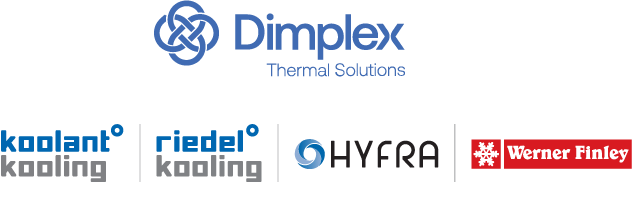| Part # |
Description |
| 360437 |
PUMP PLATE ADAPTOR GRUND TO WALRUS |
| 430292 |
BIG BLUE O-RING REPLACEMENT KIT |
| 608290 |
IN/OUT FAN CONV ASSEM 16″-5/8 3PH |
| 608294 |
IN/OUT FAN CONV ASSEM 18″-5/8 3PH |
| 608297 |
OUTDOOR FAN CONV ASSEM 18″-5/8 1PH |
| 608586 |
FAN ASSEMBLY 18″-5/8 1PH OUTDOOR |
| 609918 |
OUTDOOR FAN CONV ASSEM 16″-5/8 1PH |
| 612087 |
TPHK8T6-5S PUMP TO REPLACE CRKI8 |
| 1702001 |
C1521761D3X PUMP 1HP (P122-SUS) |
| 4300070 |
FILTER 17-3/4 X 57 |
| 4300110 |
FILTER 18-3/4 X 42 |
| 4300123 |
FILTER 21-3/4 X 57 |
| 4300130 |
FILTER 22-3/4 X 44-3/4 |
| 4300134 |
FILTER 61.5 X 16.5 |
| 4300142 |
FILTER 28-7/8 X 57 |
| 4300157 |
FILTER 23-3/4 X 47-3/4 |
| 4300200 |
FILTER 22-1/2 X 41-1/4 |
| 1751752 |
P122-S 1ST1E2C4SE PUMP 1 HP WO |
| 1751753 |
P124-S 1ST1G2A4SE PUMP 2 HP WO |
| 5000570 |
CM10-2 A-S-I-E-AQQE E-A-A-N PUMP |
| 2990900 |
RHA-100ATC REFRACTORMETER |
| 2990538 |
PROPY GLYCOL 30% 55 GL DRUM P-300 |
| 2990600 |
ETHYLENE GLYCOL 5 GALLON/PAIL 100% |
| 2990601 |
ETHYLENE GLYCOL 30% MIX- 5 GALLON |
| 2990602 |
ETHYLENE GLYCOL- 55 GAL DRUM 100% |
| 2990603 |
ETHYLENE GLYCOL 55 GALLON DRUM 50% |
| 2990604 |
ETHYLENE GLYCOL 55 GALLON DRUM 30% |
| 2990605 |
ETHYLENE GLYCOL 55 GALLON DRUM 45% |
| 2990606 |
ETHYLENE GLYCOL 5 GALLON PAIL 50% |
| 2990609 |
PROPYLENE GLYCOL 30% 55 GALLON DRUM |
| 2990610 |
PROPYLENE GLYCOL 5 GALLON/PAIL 30% |
| 2990611 |
PROPYLENE GLYCOL 50% 55 GL DRUM |
| 2990612 |
PROPYLENE GLYCOL 50% 5 GL PAIL |
| 3899405 |
611444-01 (E149) FAN BLADE 24 16DEG |
| 4500028 |
610347-01 FAN BLADE 24 33 DEG 5/8 |
| 4500035 |
61142601 FAN BLADE 18 5/8 KEY |
| 4500036 |
61146601 FAN BLADE 16 5/8 KEY |
| 4001310 |
K1324 MOTOR 56C 1/2HP 3PH TEFC |
| 4051301 |
MOTOR #W#48T17T144* 1/2 HP 3PH 5/8 |
| 4051311 |
048A170F1H MOTOR 1/2 HP 1PH5/8 KEY |
| 4051320 |
MOTOR 056T11T5542 56YZ 1-1/2HP 3PH |
| 4070113 |
MOTOR 48Y FRAME 1/3 HP 1 PH |
| 4391164 |
FILTER BAG 4X14 POLPROPYLENE 50MIC |
| 4504182 |
VENTURI 18″ GALVANIZED DWG #201678 |
| 4330900 |
D3350-0043P FILTER 1/2″NPT 80 MESH |
| 4330501 |
151122 BUNA O RING FOR BIG BLUE |
| 4331001 |
R50-BBS FILTER CARTRIDGE 50 MICRON |
| 4331005 |
SW-3 WRENCH 150296 PENTAIR |
| 4331007 |
WPX100BB97P FILTER CARTRIDGE 100M** |
| 1731538 |
101B125F11BD PUMP VANE 2 GPM |
| 1732507 |
104E240F11BC VANE PUMP (P132-B) 4GP |
| 1732509 |
104E240F11XX PUMP VANE 4GPM NO RELF |
| 1732511 |
COUPLING 3045 5/8 PROCON |
| 1732512 |
1048-1C ADAPTOR 56C FRAME PROCON |
| 1732602 |
104B240F11BC PUMP VANE 240 GPH |
| 4090103 |
114067 MOTOR 1 HP (E143-B) |
| 4090106 |
110353 MOTOR 1/2 HP (E145-3) |
| 4507018 |
FAN GUARD 18″ DIA 1.5″ TALL |
| 4507019 |
FAN GUARD 18″ DIA 4.5″ TALL |
| 4391138 |
PE-100-P-4-S FILTER BAG |
| 1679000 |
3400K111 PUMP 232 5HP 6.3″ IMP |
| 1399025 |
810S037B01 FAN MOTOR |
| 1785001 |
TPHK2T7-7S PUMP VERTICAL STAINLESS |
| 1785003 |
TPHK4T5-5S PUMP VERTICAL STAINLESS |
| 1785004 |
TPHK4T7-7S PUMP VERTICAL STAINLESS |
| 1785007 |
TPHK8T6-5S PUMP VERTICAL STAINLESS |
| 1785010 |
CDLKF4-80/8 PUMP VERTICAL STAINLESS |
| 4331230 |
OR-5 O RING WATTS BIG BLUE 10/20 |
| 1751526 |
1MS1E4D4 PUMP 1 HP TEFC STAINLESS |
| 1751527 |
1MS1E5D4 PUMP 1 HP TEFC STAINLESS 3 |
| 1751528 |
1MS1G5B4 PUMP 2HP TEFC STAINLESS 3 |
| 1751570 |
2HM1G5E3KK PUMP 2 HP TEFC SS |
| 4800119 |
18″ FN045-4DH.2F.V7P2 W/ WALLPLATE |
| 4800138 |
20″ FN050-4DK.4I.V7P1 156754 |
| 1732603 |
1113 CLAMP V-BAND |
| 1751590 |
1ST1G5A4 PUMP 2 HP TEFC STAINLESS |
| 1751754 |
P126-S 2ST1H2A4SE PUMP 3 HP WO |
| 1751755 |
3ST1J2G4SE PUMP 5 HP WO (P128-S) |
| 1760213 |
LB0512TE PUMP 1/2HP 115-230/1/50-60 |
| 1769019 |
10K55 SEAL KIT (FITS 1MS / 1ST)VITN |
| 1781028 |
CRKI4-50 PUMP VERTICAL SS NEMA |
| 1785000 |
TPHK2T5-5S PUMP VERTICAL STAINLESS |
| 2990537 |
PROPY GLYCOL 50% 55 GL DRUM P-323 |
| 2990539 |
P-323 GLYCOL 5 GALLON/PAIL 100% |
| 2990541 |
PROPY GLYCOL 100% 55 GL DRUM P-323 |
| 2990607 |
PROPYLENE GLYCOL 100% DRUM |
| 2990608 |
PROPYLENE GLYCOL 5 GL 100% |
| 2990613 |
ETHYLENE GLYCOL 5 GALLON/PAIL 45% |
| 4090105 |
115726 MOTOR 1/2 HP (E145) 5/8 KEY |
| 4300120 |
FILTER 18-3/4 X 44-3/4 |
| 4300170 |
FILTER 30 X 30 |
| 4330001 |
150238 FILTER 1 BIG BLUE # 10 |
| 4330006 |
150236 FILTER 1-1/2 BIG BLUE # 20 |
| 4331012 |
R50 FILTER CARTRIDGE 50 MICRON |
| 4331013 |
CARTRIDGE COUPLER FOR #20 FILTER |
| 4331210 |
PCF1-20MB FILTER CART. 155274-43 |
| 4395004 |
100 MICRON FILTER #4 BAG |
| 4500038 |
610542-01 (E148) FAN BLADE 18 5/8 |
| 4800131 |
18″ FB045-4DK.4F.V4P FAN 135610 |
| 4800131 |
18″ FB045-4DK.4F.V4P FAN 135610 |
| 5000009 |
O-RING, 1.174 ID X .103 WIDTH |
| 5001343 |
DROP SHIP PACKAGING GLYCOL 5GAL PAIL |
| 600102-S |
PROCON PUMP 2GPM 1PH RELIEF***SRV |
| 600110-S |
PROCON PUMP 240GPH 1PH RELIEF***SRV |
| 612542-S |
PROCON PUMP 4GPM 3PH RELIEF***SRV |

